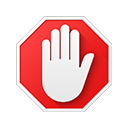
Way back in 2016, I downloaded and played the first Nioh public alpha. Team Ninja, the veteran action game developers behind Ninja Gaiden and Dead or Alive, working on a game that took inspiration from Dark Souls, was too much of a perfect idea to ignore. Within 10 minutes of playing that alpha - which was so bastard hard the devs had to tune down the difficulty for the next demo, and consequently the full release - I knew something to be true: I would get the Platinum trophy in this game.
Fast-forward nine years, and here I am, sitting on a PSN account with two Platinums each for Nioh and Nioh 2 (thanks, PS5 versions). Those games struck a chord with me: the mythological fantasy setting of Sengoku-era Japan scratches an itch I didn't even know I had, and the fighting-game inspired, stance-based combat that has grown and mutated into something deep and mechanically satisfying represents a high tide in the action-RPG genre only rivalled by FromSoft, in my humble opinion.
I had that same sense of instant rapport with Onimusha: Way of the Sword. On paper, the Nioh games and Capcom's reboot of its 10th best-selling franchise are very similar: linear, hardcore action-RPGs with an emphasis on combat and a deft use of horror elements to make the setting of Japan in the 1500s seem even more threatening. Onimusha - despite being packed with demons and supernatural elements - is slightly more grounded than Nioh has ever been, though: in playing as Miyamoto Musash, a legendary Japanese swordsman based on a real historical figure, your movements and reactions are more realistic than William Adams or Hideyoshi's ever were in the Nioh games.
The result, in your hands, is a character that is lithe, responsive, and precise. In a hands-on preview at Capcom's offices ahead of Gamescom, I got to play a 20-minute demo that pushed Mushashi through a dark, gloomy castle under the control of Musashi's real world rival, Sasaki Ganryu. The demo culminates in a battle with the storied samurai, and it was in this encounter I thought 'yep, I'm going to 100 percent this game'.
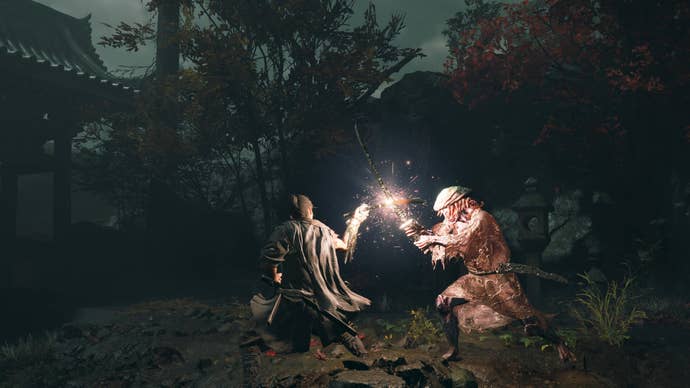
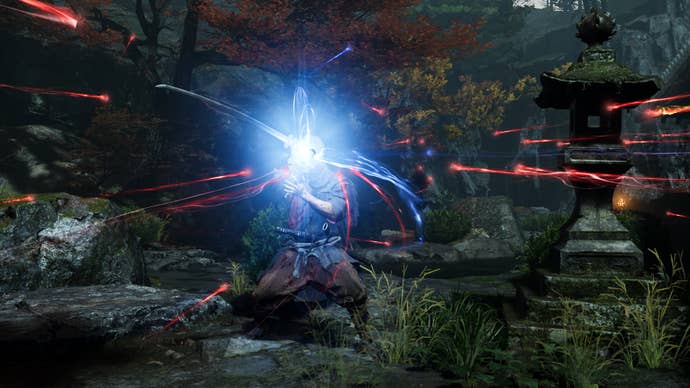
The fight itself is fast and brutal: in true Soulslike style, Ganryu gets a big health bar across the top of the screen, and - once more like Nioh - a stamina bar, too. The core mechanic in Onimusha: Way of the Blade is a light/heavy attack system, supplemented by dodge rolls and parries. Now, I'm the sort of player that basically never uses the guard button in Souls games (Dex builds for life), so the dodging/parrying system in Onimusha felt like coming home. As far as I could tell, you can parry every attack from the boss, though some (like his flying overhead stomp that looks like something out of Tekken) are often better dodged, since the 'bullet time' effect you get from ducking out of the way and the window it opens up are more reliable than the tight timing required to parry more effectively.
Other attacks, though, such as his more general sword slashes, are more telegraphed, and easier to time. A successful parry will see Mushashi either respond with a dedicated animation and attack that will inflict a decent amount of damage, and drain Ganryu's poise, or set you up for a nice combo where you can risk heavy moves instead of the less-impactful flurry of light attacks you'll be throwing his way in the general melee.
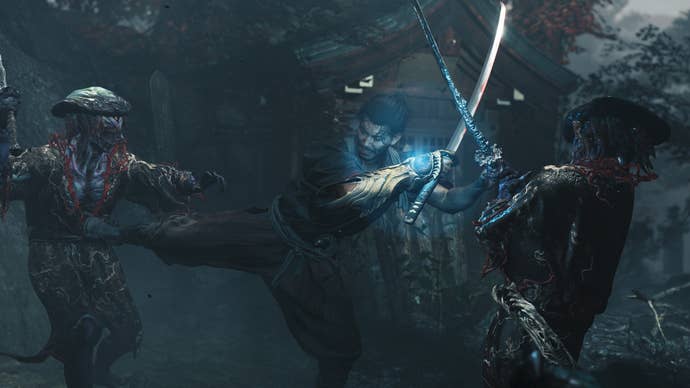
Ganryu is no idiot, though. I need more time with the game to figure this out for certain, but it seemed that the samurai would get used to the strings of attacks - light, light, heavy - I'd use to poke at his defences, and respond by blocking and countering. This results in this tidal flow of back and forth that, when firing on all cylinders, looks like something straight out of a mid-career Kurosawa film.
I don't want to say it reminds me of Sekiro (there isn't quite the sense of choreographed ballet or scale, here) but the ebb and flow of combat certainly evokes the more volatile Soulslike encounters. Once again, I must invoke Nioh: the samurai-on-samurai elements of the battle make the playing field feel more level, and tense. I don't doubt there will be massive oni to slay, too, but I reckon it's in these more 'mirror match' encounters Onimusha is going to properly shine.
The highlights of the battle, in no particular order, were: getting an early parry in and landing a brutal overhead smash that broke Ganryu's jingasa (big hat) which, I think, left him more vulnerable to damage taken on his upper body; breaking his poise and landing a devastating cut to the demon-powered gauntlet on his wrist with a Metal Gear Revengence-like focus attack, that I imagine will be an integral part of boss fights; and landing the killing blow by walking backwards in a wary circle and baiting the aforementioned overhead kick in order to dodge, and land one of the most satisfying finishers I've ever managed to pull off within 20 minutes of starting a game.
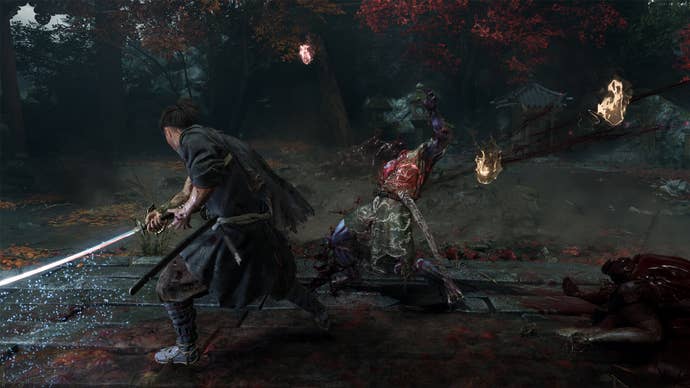
Miyamoto Musashi is a famed swordsman. Perhaps one of the most influential folk heroes of Japanese history. His skill with a blade was unmatched, and his travels have inspired reams of lore and legend. Capcom chooses to enshrine his legacy in a different way, here, making you feel powerful, smart, and subtle in your footwork and swordplay. Nioh may have won my heart with its bombastic, jackhammer-like approach to its brutal combat, but there's something in the precision and artistry of Onimusha's mechanics that makes me sit here, days later, yearning for more.
I think Onimusha: Way of the Blade is going to be something quite special. I hope the full game, with its enemy variety and assumedly larger scale, can keep up such powerful momentum.







-3.png)



